Audiences are ‘back but different’: what drove OOH’s record March
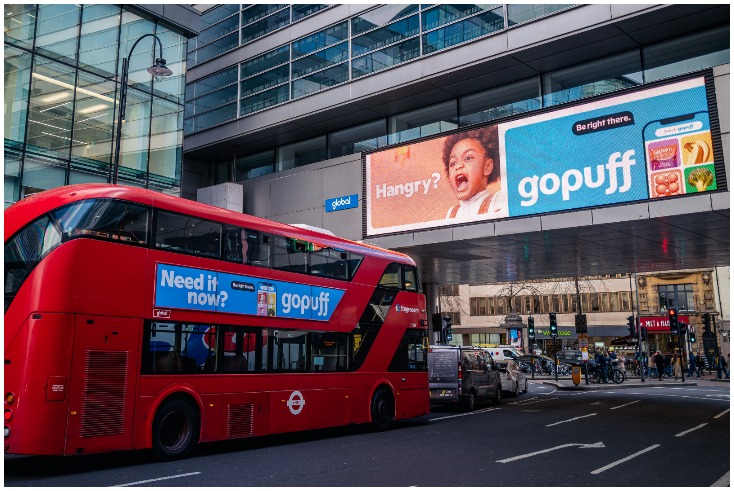
The month of March has been hailed as one of the out-of-home media sector’s biggest ever trading months as people returned to the office, city centres and local high streets with the lifting of restrictions.
Out-of-home media owners and agency sources have told The Media Leader that March 2022 audiences, revenues and advertiser demand were markedly up on the previous two months.
Richard Bon, UK managing director and Europe commercial lead at Clear Channel Europe, said: “It’s definitely going to be our best March ever. What we are seeing is the blended approach of working from home and working from the office is seeing audiences at the highest points we’ve ever seen them.”
Chris Forrester, director of commercial outdoor at Global, said it was significant growth on last year and on 2020, with “a big step-change in activity” from February, when Prime Minister Boris Johnson announced that all social-distancing restrictions in England would be lifted from 24 February.
Matthew Dearden, the former Clear Channel UK, CEO, also reported that his fledgling business Alight Media had recorded its “strongest booking month ever”. Dearden told The Media Leader he had seen a “positive change in client behaviour” alongside a strong March.
A ‘typical’ month?
But is this simply a return to the pre-pandemic normal with people returning to routines and as a result, roadside and retail rebounding with money following the audience?
Curtis Weir, OOH Group Director at Publicis Media commented: “March leading into Easter is a typically busy period for OOH and advertising as a whole, given people maximise seeing family and friends during the religious period and double Bank Holiday.
While OOH typically sees high levels of demand in March from finance, automotive, entertainment and FMCG categories due to the end of the tax year, new vehicle registrations and pre-Easter holidays, there has been a return to comparable spend this year clearly showing a return of confidence in the market, Weir said.
However, Weir clarified: “This is the first ‘post-pandemic’ public holiday and between the high levels of vaccine uptake and the boosters working, there is an attitude of wanting to get back to normality.
“There is also a continued desire to be together with loved ones or have a break while children are on holiday and possibly a change of scenery. With this in mind, brands seem to be relishing the opportunity to be able to book OOH campaigns now with the uncertainty of restrictions gone.”
Audiences are back but ‘different’
Bon told The Media Leader that in Clear Channel’s case its SDK data – mobile data taken from consumers to understanding the public’s engagement with screens – is showing that the company’s frames are reaching 128% of pre-pandemic audiences on average.
TV inflation will help drive demand for OOH advertising, Bon added. But, while audiences are back “first and foremost” to pre-pandemic levels, they have changed their behaviour.
“Out-of-home is really benefiting this from this blended working from home and working from the office,” Bon said. We are seeing different patterns, people travelling at different times in different ways, spending more time on their local high street, but also as a as a result going into larger city centres more at weekends, especially if you elevate your view beyond London.”
Audiences are also beginning to travel more widely than they have been for the last two years, with positive impacts across different OOH formats.
Sarah Parkes, chief sales and marketing officer atTalon Outdoor said: “Audiences are back and back everywhere, not only on roadside but the commuter audiences are now coming back in their droves. No restrictions mean people are travelling further and we are seeing that in airports as well.”
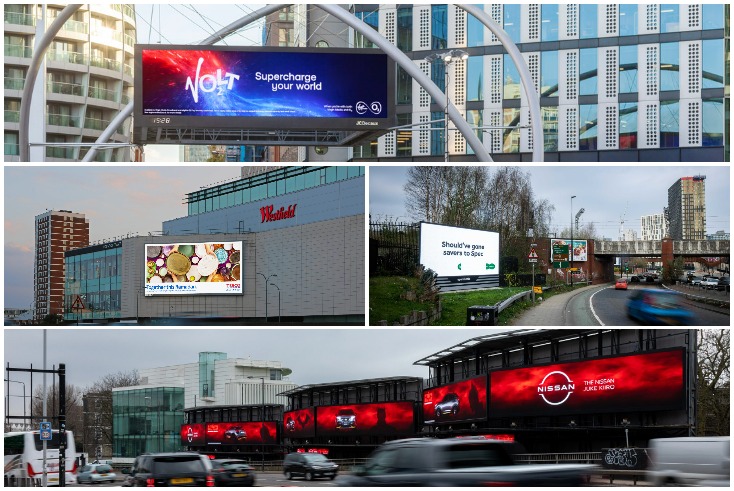
Forrester commented that the attitudes of in, or out, at work, or at home have gone and that passenger numbers are at the weekend are “really impressive”.
The launch of the Queen Elizabeth Line (Crossrail) later this year will also drive passenger numbers and out-of-home opportunities, he said. The QEL, whose outdoor advertising screens are being provided by Global Outdoor, has a significant DOOH footprint.
Michelle Sarpong, trading director at the7stars, acknowledged the outlook for OOH is “really strong and positive at the moment” with less “shortism” about OOH activations, but said volumes in rail inventory were still not being “snapped up” as they were pre-pandemic.
“Through TfL reports we know that travellers are continuing to rise, however while advertisers have been slow to take up this inventory post-pandemic this is slowly changing with rail inventory slowly picking up as the year progresses,” Sarpong explained. “This will only heighten with the pending launch of Crossrail. [Although] as HFSS restrictions increase [and] this will provide challenges for clients, the OOH market will continue to still thrive.”
According to GroupM’s latest UK adspend forecast, outdoor will make up just under 3% of total £33.6bn UK market this year.
Out-of-home went from £1.04bn in 2019 to £559.4m (down 46%) in 2020. GroupM forecasts OOH adspend to grow by 41% to reach £1.04bn this year. Growth will then slow to 6% to £1.1bn in 2023.
However, the industry can expect a range of negative business factors (often described by commentators as “headwinds”) that could drag down the sector’s recovery this year. Sarpong and Bon concurred that the main risks for 2022 are inflation and the rise in cost of living and the uncertainty around the conflict in Ukraine in the coming year.
James Rodham, UK commercial director at IPG Mediabrands’ OOH media agency Rapport, commented: “OOH has always done well to adapt to market conditions, even during the pandemic with media partners investing in the OOH product and premium digital offerings, and noted OOH buying and targeting is changing with audiences.”
“A move to flexible/hybrid working has seen campaigns being optimised differently – from a two-week block to Tuesday, Wednesday and Thursday activations between 8-11am for example – and with brands delivering activations more creatively, plugged in with an enhanced, smarter data offering the future is bright,” he added.
Programmatic out-of-home proving popular
Forrester revealed March was Global’s “biggest ever month for programmatic digital out-of-home”.
He has seen small format digital, roadside and brand campaigns particularly “pick up” with a change in revenue mix with more programmatic and specific data targeting.
Parkes added that Talon is seeing money coming into programmatic from new brands to out-of-home.
Dearden described Alight Media as “a digital-first media owner” and they were “big fans of selling flexibility”, taking more and more bookings on an audience or time basis, and computer-to-computer buying if it adds value to the client.
Alight has launched digital screens in over 100 towns since founding in 2018. Dearden said at that time 90% of UK’s screens were in only 10 towns. He says digital out-of-home reach has now become “truly national” with data and computer-based buying opportunities.
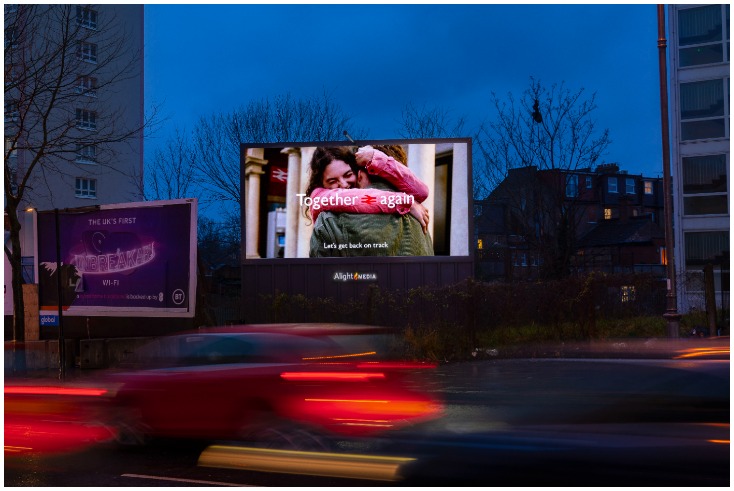
Bon noted that this shift to digital buying has meant brands can act more in the short-term meaning “everything is happening later” from a revenue perspective.
Clear Channel Europe’s revenue in the month for the month is 32% higher than it used to be as brands can make later decisions because of out-of-home digital and mobile data to understand travel patterns.
IPG’s Rodham agreed that the way advertisers are buying OOH is changing, which could explain the current rise in demand: “The market has been shifting to digital for well over 10 years but it’s no surprise that the pandemic accelerated that shift and with that, came a change to the way media is bought.”
“Digital OOH now enables advertisers to activate in the short-term, booking in the same month for a campaign to go live the next day, rather than the 12-week lead times they may be used to historically. And, as a consequence of this change not just in client behaviour but alongside positive market recovery, the market will naturally be seeing more money booked in this month,” he added.
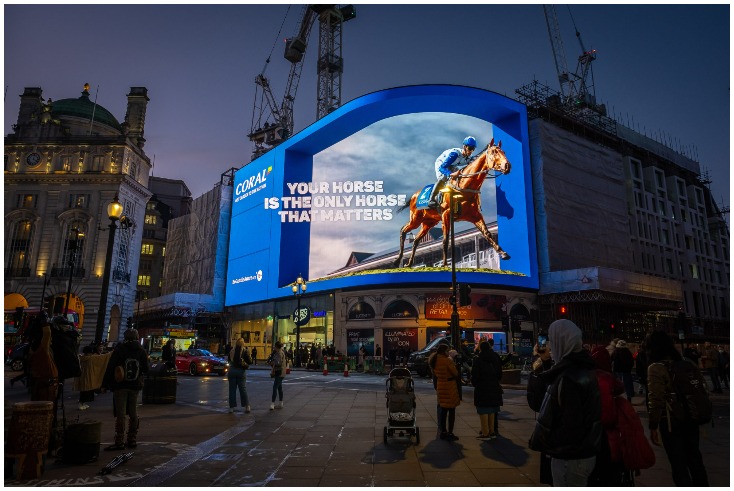
He also said: “Digital native brands such as fast fashion and the digital tech start-ups are definitely becoming more prolific in this space but we’re also seeing a greater shift to digital OOH with all brands using the channel to deliver clever activations in a more creative way.”
Weir agreed with Forrester that data and targeting have been crucial to OOH’s recent success.
“There has been a large investment from both the buy and the sell side in new data sets to help understand new audience movements and behaviours post-Covid,” Weir added.
Gavin Wilson, chief revenue officer at VIOOH, the global digital out-of-home marketplace launched backed by JCDecaux, said: “There is a drive for data signals to determine OOH’s influence on online touchpoints across the customer journey and to show how real-world exposure impacts online behaviour across search, social and online commerce. As a result, the market is seeing investment from a wider number of categories and brands.”
Entertainment, travel and leisure sectors re-entering the market ‘in a big way’
Sarpong said: “With category trends a lot of traditional advertisers are back in the market as the effectiveness of the channel was never in doubt pre-pandemic it was just the reduction in impacts. We are seeing categories like Travel, Leisure, Beauty and Fashion to name but a few come back into the market. We will also see a boom in entertainment brands coming back as confidence grows around events actually going ahead and cinema releases not being postponed. So, there is more money to still come into the market.
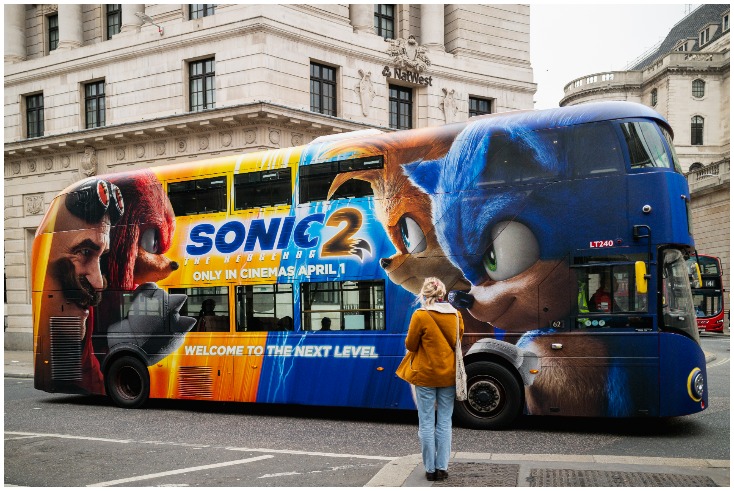
VIOOH’s Wilson revealed its top five sectors accounted for more than half of the overall revenue spend on the platform.
In the first quarter if 2022, the highest revenue on VIOOH’s platform came from technology companies (13%), closely followed by food & beverage (12%), sports & entertainment (11%), fashion & beauty (10%) and retail (7%) clients.
While the government was a big spender during the pandemic with Covid messaging and now that spend will be reducing, so-called “long-tail” advertisers are coming back, Talon’s Parkes insisted.
Forrester said quick commerce were good examples of the power of out-of-home. He said: “It did not exist a year ago and came to out-of-home and it is a very competitive environment and they have done stats to show it was very successful for awareness and consideration and brand.”
Phil Hall, Ocean Outdoor’s UK joint managing director, highlighted new economy brands such as tech and delivery companies helping to boost revenues and the vast majority of pre-pandemic OOH supporters are “back in force”.

Rodham said historically, OOH has been “underpinned” by those ‘traditional’ advertisers – travel, food, entertainment, finance and Government – and, as audiences are moving around more, it is natural to see increased activity in those sectors.
This growth is set to be topped in coming months
Hall, Sarpong, Wilson and Parkes agreed that the coming months would bring bigger growth for out-of-home advertising.
Sarpong commented: “Their biggest months are yet to come. It was definitely bigger than 2021 which makes complete sense as we were just coming out of a lockdown so there is year-on-year growth there which is encouraging. But not all categories are back in the market yet and, with a number of cultural events coming up in a year where hopefully we shouldn’t see any disruption in the market due to Covid, we should see a really strong H2.”
Sarpong went on to say this past year for OOH media owners have been trying to rebuild trust in the channel, reassure clients and agencies that audiences are there, build on momentum from Q4 2021 and achieve growth investment compared to 2019.
She added: “I 100% believe with increased categories entering the market, along with increased investment in rail inventory, their rebound will be exceptionally strong.”
This rebound and increased investment could come as soon as April. Wilson revealed April is already looking likely to surpass March, which saw an almost-40% month-on-month increase in campaigns on the VIOOH platform.
Ocean’s Hall, meanwhile, pointed to more growth being “very likely” to come through as the longer tail of OOH spenders return and, in particular, travel and motor categories recover.



